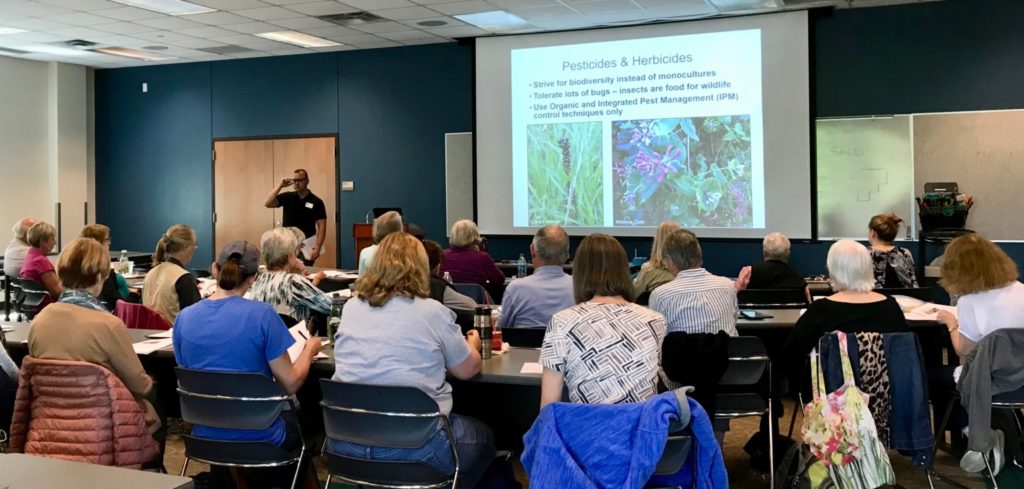
What You Will Learn
Our Native Landscape Certification Program (NLCP) is a series of day-long classes highlighting best practices for native plant landscaping, including wildlife habitat gardening. Each class consists of an indoor training session and a plant identification session.
We show you plants native to the local ecoregion and illustrate their use in the landscape. In each level you are presented with 45 native Texas plants recommended for your area, and 5 non-native plants to avoid.
We look forward to increasing your appreciation and use of native plants in landscapes, including:
- Emphasizing a sense of place for residents and visitors
- Increasing the presence of desirable wildlife species
- Reducing the use of water and other resources
- Enhancing and protecting our natural world
How it Works
Classes are adapted to the area in which they are offered, so please choose a class in your geographic area. In Austin our classes are specific to the Edwards Plateau and Backland Prairie ecoregions, and include plants appropriate for both.
- Level 1 – Introduction to Native Landscapes*
- Level 2 – Landscape Design with Native Plants
- Level 3 – Installation and Maintenance of Native Landscapes
- Level 4 – Stewardship of Native Plant Communities
- Native Landscapes for Birds – A companion class with no prerequisite is now being offered: Native Landscapes for Birds.
*Level 1 is a prerequisite to subsequent levels. Levels 2, 3, and 4 may be taken in any order.
